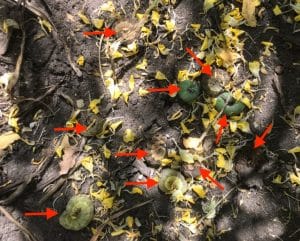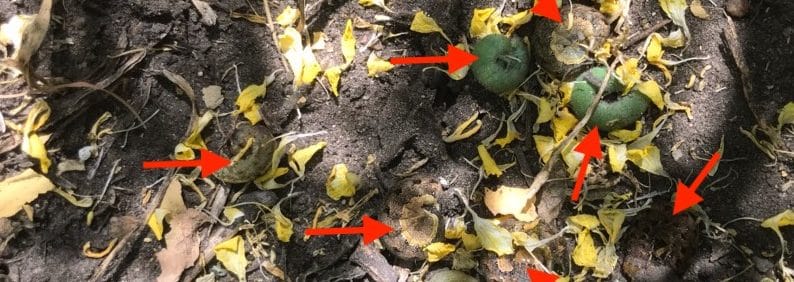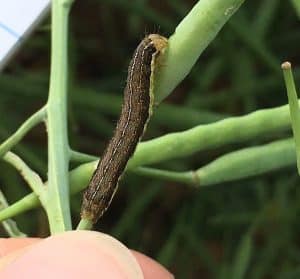Bertha armyworm trap season will close over the next two weeks, and monitoring, so far, has shown only a few potential hot spots. Even if an area is low risk according to provincial risk maps, local hot spots can flare up – which is why each farm should make its own assessment on a field by field basis.

See the latest provincial update: Alberta Saskatchewan Manitoba
Farmers and agronomists could start scouting now, but keep in mind that larvae could be fairly small and focused on leaves. Missing leaves or holes in numerous leaves may give you a week or more warning before pod chewing occurs. Continue monitoring every few days if indication of insect feeding is found and keep going until the potential threat is determined and action is taken or not needed. (The pre-harvest interval for some products is as little as one day.)
At each scout location, mark out an area of one square metre. You could also mark off a space 50cm by 50cm and multiply results by four to get counts per square metre. 50cm is 20” – or about the distance from elbow to finger tip.
Vigorously shake the plants growing within that area to dislodge larvae on the plants. Push the plants aside then count the number of berthas on the ground. Pick up fallen leaf litter and trash from the ground within the scouting area, as many berthas could be hiding there. You may want to pause a minute and wait for the larvae to begin moving around again to allow for easier counting. Scouting techniques. Thresholds will be around 15 to 20 bertha larvae per square metre in most situations. See the full thresholds table at canolaencyclopedia.ca.
Distinguishing features: Berthas come in brown, black and green shades. The green berthas are shinier than other green worms, and the yellow-orange stripe along each side is more pronounced, even on younger ones. Mature larvae are up to 1.5” long, making them considerably larger than diamondback moth larvae at late stages. Being part of the cutworm family, they curl up when agitated.
Note that young bertha armyworm larvae (smaller than half an inch) should not be included in threshold counts but populations should be monitored continuously and controlled if they exceed thresholds at later stages.
Product options and pre-harvest intervals. You can find pre-harvest intervals for all canola products here, but the Canola Encyclopedia section on bertha armyworm also lists the specific bertha products along with their pre-harvest intervals.


